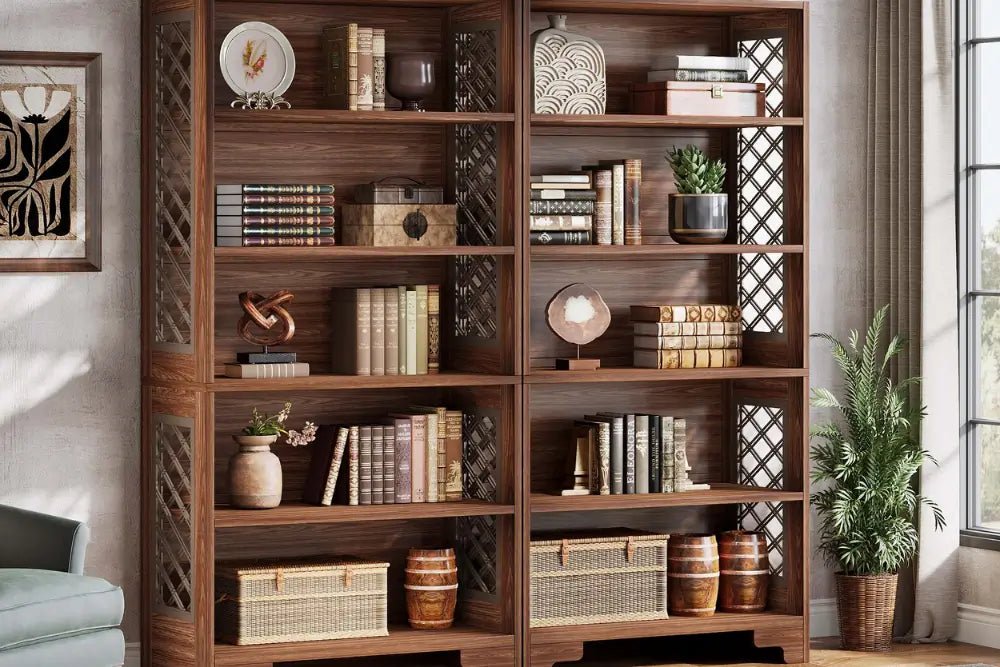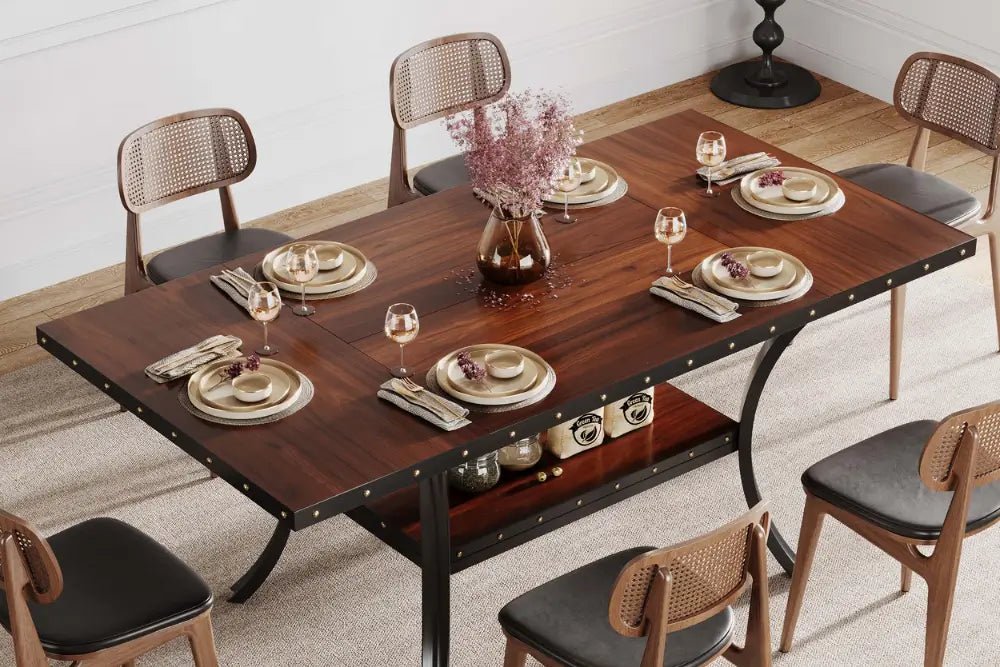1. Sideboard or Credenza
Originally designed for dining rooms, sideboards and credenzas have become increasingly popular in living spaces as stylish TV stand alternatives. Their broad, flat surfaces offer ample room for large-screen TVs, while the generous storage below is perfect for hiding away electronics, gaming consoles, or extra cables.
What makes them especially appealing is their aesthetic flexibility—they come in a variety of styles, from mid-century modern to farmhouse chic. If you're looking to create a cohesive look across open-concept spaces, a credenza that complements your dining or living room décor can pull the entire design together.

2. Console Table
Console tables are a go-to option for smaller spaces or minimalist interiors. With their narrow, elongated design, they fit well in tight spots like hallways or compact living rooms. When used beneath a wall-mounted TV, a console table adds a sleek visual anchor while offering light storage for remotes, media accessories, or decorative items.
Many console tables come with built-in drawers or lower shelves, giving you just enough space to keep things tidy without adding bulk. They're ideal for apartment dwellers or anyone looking to keep a room feeling airy and open.

3. Dresser or Chest
Using a dresser or chest as a TV stand is a smart, functional choice—especially in bedrooms or dual-purpose rooms like guest rooms or home offices. These pieces offer sturdy support for your television while also providing ample drawer space for clothes, linens, or electronics.
The best part? You don’t have to sacrifice style for function. Whether you prefer a sleek, modern dresser or a vintage, distressed chest, there’s a piece out there to match your aesthetic. You can even repurpose an old dresser with a fresh coat of paint and updated hardware to create a customized TV station that’s uniquely yours.
4. Bookcase or Open Shelving
If you’re a fan of multi-functional furniture, bookcases or open shelving units can serve double duty as both a media center and a storage solution. By placing your TV in the center and surrounding it with books, plants, or decor pieces, you create a layered, personalized focal point that’s both practical and visually appealing.
Open shelves keep the room feeling light and organized, while also giving you the flexibility to rearrange or update the look seasonally. This setup works especially well in bohemian, eclectic, or contemporary interiors where curated displays are part of the aesthetic.

5. Floating Shelf or Wall-Mounted Cabinet
For a clean, minimalist look, floating shelves and wall-mounted cabinets offer a sleek alternative to traditional TV stands. These solutions free up valuable floor space—perfect for small apartments or modern homes with open layouts.
A floating shelf below a wall-mounted TV provides just enough surface area for a soundbar, remotes, or a few decorative accents. If you need hidden storage, consider a wall-mounted cabinet that blends seamlessly into the wall for a streamlined effect. Both options contribute to a clutter-free, design-forward environment.
6. TV Easel
Want to turn your TV into a statement piece? A TV easel stand adds an artistic, gallery-like vibe to your living room. Inspired by classic artist easels, these stands cradle your TV securely while giving it a unique presence—almost like a framed canvas on display.
TV easels are ideal for modern, industrial, or Scandinavian interiors where minimalism meets creativity. Some models even include cable management features to maintain that crisp, clean aesthetic. It's an excellent choice for those who want their tech to complement, not dominate, the room.

7. Bench
Using a bench as a TV stand might seem unconventional at first, but it’s a surprisingly practical and stylish solution—especially in casual or small-space settings. A sturdy wooden or upholstered bench provides a stable base for your TV, with room underneath for baskets, books, or media gear.
Some benches come with built-in storage or cubbies, making them even more functional. This option works well in living rooms, bedrooms, or even entryways where multifunctional furniture is a must. It’s a simple way to blend form and function without overwhelming your space.
8. Coffee Table or End Table
In tight living quarters or multifunctional spaces, a coffee table or end table can double as a compact TV stand—especially for smaller televisions or casual viewing setups. This solution is particularly useful in bedrooms, studio apartments, or dorm rooms where space is limited and every piece of furniture needs to earn its keep.
Look for a coffee table with shelves or storage compartments to keep remotes and cables organized. Nesting tables or side tables with a bit of height can also be repurposed to hold a TV while maintaining a laid-back, lounge-friendly vibe.
9. Fireplace TV Stand
A fireplace TV stand combines warmth—literally and stylistically—with function. These dual-purpose pieces feature an electric fireplace insert in the center, flanked by shelves or cabinets to house media equipment and decor.
Perfect for cozy living rooms or cold-weather climates, this option adds ambiance while eliminating the need for separate furniture. Many modern versions come with cord management systems, adjustable shelving, and remote-controlled heating, making them a practical and aesthetic upgrade to the traditional TV stand.
10. Wall-Mounted Cabinets
Wall-mounted cabinets are a space-saving powerhouse, ideal for modern homes that prioritize clean lines and floor clearance. By mounting your TV directly to the wall and installing a cabinet just below or around it, you create a highly functional and visually streamlined entertainment zone.
These cabinets often include hidden compartments for devices and cables, helping you maintain a clutter-free look. Choose from floating media consoles to modular cabinet systems that can be customized to suit your layout and storage needs. It’s a great solution for those who value both form and function in their living space.
Factors to Consider When Choosing a TV Stand Alternative
Before choosing a non-traditional piece of furniture to support your TV, it’s important to keep a few practical factors in mind:
Surface Size: Make sure the furniture piece has a wide enough top surface to safely accommodate your TV’s base. Always check the TV’s width and depth dimensions against the surface area available.
Weight Capacity: Not all furniture is designed to support the weight of a television, especially older or larger models. Always verify the weight limit of the piece you're considering—especially for options like floating shelves or dressers.
Height and Viewing Angle: Choose a height that allows for comfortable, eye-level viewing from your usual seating position. Too high or too low can strain your neck over time.
Cable Management: Look for pieces that offer built-in cord cutouts, hidden compartments, or space behind the unit to route wires cleanly and safely.
Storage Needs: Consider how much storage you need for things like streaming devices, game consoles, remotes, and accessories. Open shelving is great for display, while closed cabinets help reduce visual clutter.
Style Compatibility: Finally, make sure your chosen furniture complements the overall design of your space, whether you're going for mid-century, rustic, minimalist, or something eclectic.
Final Thoughts
Traditional TV stands certainly still have their place—especially in homes with more conventional layouts—but today’s interior design landscape offers a wide range of creative, stylish, and functional alternatives. Whether you’re trying to save space, make a statement, or repurpose what you already own, there’s a furniture option out there that can suit both your television and your taste.



